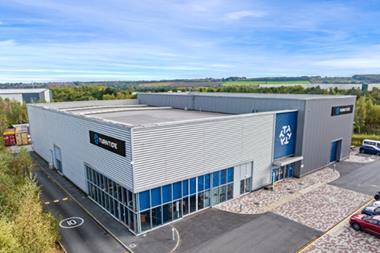The European industrial and logistics sector remains in rude health, with take-up and investment volumes robust following what was a record 2017.

The sector’s strong fundamentals are being underpinned by e-commerce, with online sales in EU countries growing by an average of 12% to 14% a year, according to Eurostat. E-commerce accounted for 32% of UK take-up in 2018, the highest on record, CBRE figures show.
To support this online sales growth, corporations have had to invest heavily in their supply chains as consumers show an increasingly insatiable appetite for cheaper and faster delivery times.
Until recently, brands and distributors such as Amazon, Alibaba, eBay and Etsy, as well as domestic retailers, dominated the online space.
Now we are seeing the next wave with SMEs, which have been historically underserved by the major logistics providers, driving opportunity and growth in e-fulfilment, enabling the phenomenon of ‘social commerce’. Driven by millennials, social commerce is where social media meets e-commerce and where social networks – such as Instagram, Pinterest or Facebook – are the conduit to making an online transaction.

Content such as video is also increasingly being used to sell products. Similarly, consumers can make a purchase directly from the photograph accompanying an online article. Social commerce is all about offering a fast, easy and frictionless online shopping experience.
All these channels allow smaller businesses to sell to consumers globally and mark a tectonic shift in the retailer/consumer dynamic. According to research firm Forrester, 67% of online business- to-consumer sales will take place via virtual marketplaces by 2022.
For the logistics industry, the challenge presented by social commerce will be in fulfilling deliveries effectively, quickly, competitively and conveniently. It only takes one bad experience in service and the ever more fickle consumer will just open an account elsewhere.
Many big brands now prioritise servicing key global cities with an unbeatable offer in terms of delivery times – for example, order by 8pm and have it delivered before midnight. Who needs a marketing budget or high-street presence anymore? What is needed is a reliable supply chain network of fulfilment centres and urban facilities.
“The challenge will be in fulfilling deliveries effectively, quickly, competitively and conveniently”
We are already seeing investment in click and collect, but assets in city centres need to change. Historically, the returns from logistics have never been high enough compared with office and residential for it to be viable to use prime urban space as logistics hubs, but this needs to be reconsidered.
It is impossible to predict the end game, but as we are already seeing with pricing in places such as Park Royal, logistics is no longer the outlier. With space at such a premium, it will be necessary to convert other types of property, such as city-centre offices, failing retail, lock-ups and under-the-arches type buildings in major population areas to allow satisfactory delivery times to consumers.
The logistics sector’s strength as an asset class is rock solid and will require increased space in the form of more fulfilment centres and last-mile facilities. E-commerce penetration has a long way to go in every European country and at the same time is evolving very quickly.
Consumer-driven social commerce is one of the next disruptors – and it is here to stay.
Paul Graham is non-executive chairman of Clarion Gramercy
Industrial & logistics supplement
- 1
- 2
- 3
- 4
- 5
- 6
- 7
- 8
- 9
- 10
- 11
 Currently reading
Currently readingSocial commerce is a logistical challenge
- 12
- 13










































No comments yet